Charger VS Charger: Everything you Need to Know About Battery Chargers
Keep your battery alive by learning chargers and charging tactics
Automotive batteries require a regular charging cycle to last - and perform - as long as possible. Without that consistent charge-discharge-charge routine (the convenient byproduct of regular driving), the battery dies a quick death. Because many four-wheelers, 'froaders and part-time hobby vehicles are not used on a regular basis, their battery fails prematurely because of lengthy discharge windows between irregular use.
If you plan for that battery to last more than one season, your options include running the vehicle on a weekly basis during the off-season, swapping the battery into other vehicles that are used on a regular basis or frequently - if not constantly - keeping the battery on a maintenance charger.
As outlined in a piece about automotive battery use and abuse that appeared on Off-Road.com, the easiest way to maintain a battery is to maintain that battery. Duhhh - don't neglect it. The most effective maintenance is, bar none, regular long-duration operation, but if you have a crawler, mudder, sand rail or even a tractor or quad that's used inconsistently and/or parked for long periods of time, you're going to need to give that battery the right kind of maintenance with a battery charger.
Chargers are Very Not The Same
There are several distinct sorts of automotive battery chargers, and they do not - repeat, DO NOT - do the same things to that battery. The wrong charger, or the right charger used wrongly, will ruin a good battery. On the other hand, different kinds of chargers used the right way can rescue a battery that's gone flat or, at the least, keep an old battery running in peak shape.
This story (which may contain a few lines from its older brother) is about the chargers that keep automotive batteries in good operating condition, including trickling and floating your battery, smart and not-so-smart chargers, and the pros and pros of maintenance charging.

People Who Know Battery Chargers
Because the writers and editors at Off-Road.com are far better at ruining batteries than maintaining them, we sought out experts to get some facts straight. Jeff Schwen and Chris Hodges run Deep Cycle Battery in El Cajon, Calif, and specialize in automotive and custom battery applications like off-grid solar. Abe Hernandez is an electrical whiz servicing Airstream trailers and motorhomes, and a customer of Deep Cycle. Jim McIlvaine is an automotive battery expert with OPTIMA Batteries (operating in a managerial role versus the engineering position we previously labelled him with - sorry 'bout that). We spoke with all four for these stories.
Is there a difference between charging and maintenance charging? Is a maintenance charger a trickle charger?
"Trickle-charging is used interchangeably with the term float-charging. They mean the same thing in this case - you're keeping that battery topped off. Both qualify as a battery maintainer, giving the battery a maintenance charge that keeps it in peak shape," answered Schwen and Hodges.
"The terms float and trickle are used quite often to describe charging and have different meanings to different folks and the same meaning to others," added McIlvaine from OPTIMA. "Trickle generally refers to the rate of charge and is usually a lower amperage rate, like one or two amps. General charging may occur at significantly higher amperage rates. OPTIMA recommends not exceeding a rate of 10 amps on their batteries."
Is a trickle or float-charger man enough for heavy charging?
"Traditional float-chargers will provide constant voltage with tapering amperage to the battery, even when it is fully charged. Those are okay to use and certainly better than doing nothing to maintain a battery, but the smart chargers with microprocessors like our OPTIMA Digital 400 Performance Charger are a better option. Those chargers will vary and taper both amperage and voltage, depending on the needs of the battery."
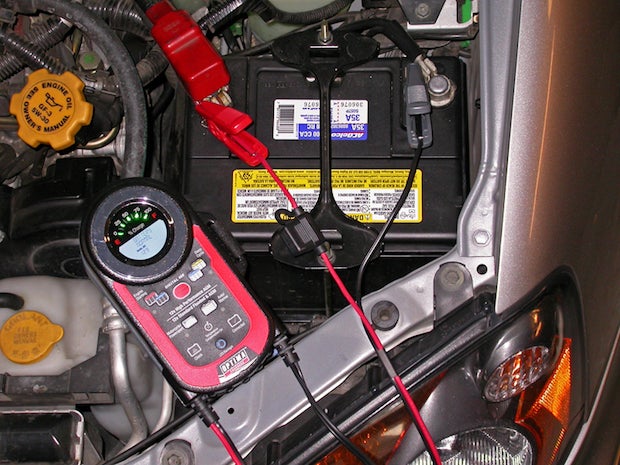
"Float-charging is usually about keeping a battery topped off - between about 13.2 up to about 13.8 volts," Schwen added. "A float-charger will not fill a flat or low battery fast. It could take 80 hours for a float-charger to charge it. Battery maintainers that will charge at one volt can rescue a very low battery - these do exist. Read the packaging, the label. In most cases - especially without industry-guy tricks - a float or trickle-charger will not rescue a battery that's dead-dead, but might be able to do it with a pretty-dead battery."
"Make sure you've got a maintainer that's got the right amperage. You can buy a powersports maintainer that flows less than one amp - down to 750 milliamp and less - and it might not be able to float-charge a big 12-volt battery. If you're looking for a pure trickle charger, I like to recommend a Battery Tender. It's a great basic trickle-charger."
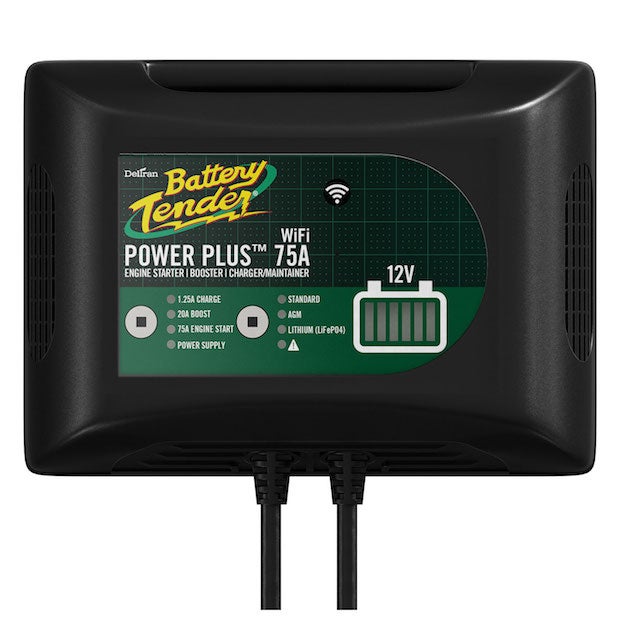
Editor's note: Despite the product being good enough for 48 other states, California and Oregon have seen fit to outlaw some Battery Tenders. Apparently, they're not made with enough unicorn farts. Keep in mind, California is also the state considering requiring cancer warnings on coffee.
How does the sweet old solid-state charger I inherited from Grandpa differ from a modern battery charger or maintenance/trickle charger?
The topic of different chargers and their value in the charging process could have filled a book. There was no shortage of back-and-forth on this between Schwen and Hodges at Deep Cycle. "There are smart chargers and there are dumb ones," started Schwen. "Smart ones read the battery they're charging and interpret power, size, condition, and charge accordingly. Some are smarter than others. Essentially, a smart charger stops charging once it gets too much resistance."
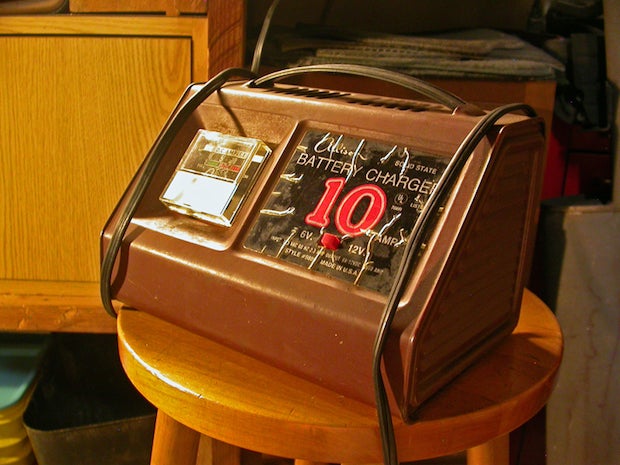
Schwen likes the old chargers. "The dumb ones give you the juice no matter what - they're hard to find nowadays. If you have one, keep it, but learn to use it - they're really useful, but they can screw up a battery if you use them wrong. A dumb charger won't shut off - risking ruining the battery, exploding the battery, all the bad stuff that comes with that. They don't sense, they just charge. Dumb chargers are good for restoring a battery's voltage. If a battery's voltage drops too low, or it's an old battery, or it's started sulfating (forming lead sulfate crystals on the plates), a high-amp charger can knock the sulfation off the plates."
McIlvaine tread more lightly. "Generally speaking, chargers that are microprocessor-controlled are better options than chargers that are not. I cannot officially endorse specific maintainers or chargers other than our own, but there are many great battery maintainer/chargers on the market. We simply don't have the resources to test each one, or monitor whether changes are ever made in how a charger is manufactured that could impact performance."
Are there any downsides to smart/processor-controlled chargers?
"Smart chargers can create surface charge - it's when the charger charges the top surface parts of the plates, but it's not charging below," stated Hodges. "A surface charge will get your car started, because the starter takes the charge from the upper section of the battery. This is not a good, deep soak charge, however - batteries charge from the bottom to the top; literally. A surface charge is not bad, it's just incomplete. Smart chargers work best when you can leave them on the battery for a period of time, to let them work."
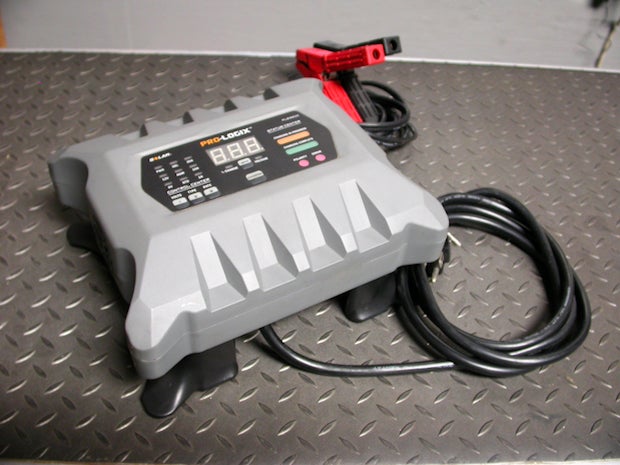
Schwen agreed, but had a few caveats. "100% agreement on the benefits of a battery maintainer with a brain. Computer control helps the quality of the charge the battery is getting. High-quality programming from a high-quality processor matters too - a garbage maintainer/charger will give you garbage battery life."
Hodges added a few caveats of his own. "Smart chargers can be fooled by battery conditions and will not rescue a low battery, or may fail to properly charge a battery, in which case you can try a very-low amperage float-charter over a long period of time, but it might shut off because of the resistance in a dead battery too. Batteries can be tricky."
McIlvaine chipped in two caveats of his own. "Chargers with AGM-specific settings [absorbed glass mat - an OPTIMA-style spiral-cell battery] are becoming more common and those settings will generally do the best job of charging and maintaining OPTIMA batteries. However, it's important to avoid using gel charger settings on non-gel batteries." He added that nearly all automotive batteries, including OPTIMA, are not gel batteries.
"Even gel/AGM settings should be avoided, because gel batteries are a very different technology with different charging requirements. Using a gel charger setting may not fully-charge non-gel batteries (including OPTIMA batteries) and could damage them over time. In those situations, it's best to just use the regular or deep-cycle charger settings. Batteries are not inexpensive items to replace and a quality battery charger can more than pay for itself by extending the lifespan and reducing battery replacement costs over time."
What are some in-garage charging techniques that would help/protect/preserve a battery in a hobby/infrequently used vehicle?
"First, before storing your vehicle, check the voltage to ensure the battery is fully charged (~12.6-12.8V for REDTOPs and ~13.0-13.2V for YELLOWTOPs)," declared McIlvaine. "We recommend charging your battery before storing it. If it's not fully charged beforehand, give it a boost with an OPTIMA Digital 400 or 1200 Performance Charger."
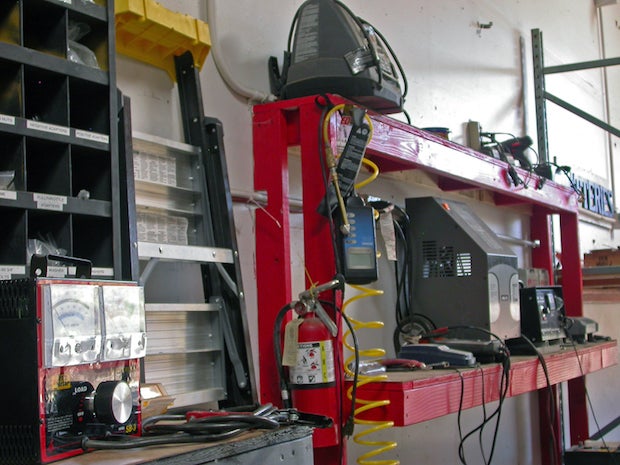
"While in storage, we recommend using a quality battery-maintainer that is microprocessor-controlled. OPTIMA chargers provide an automatic restart in the event of power disruption, as well as temperature-compensated charging. Using a quality battery-maintainer on your battery prior to storage is an easy last step that will ensure a quick start when you're ready to go again."
"Use it or lose it," chimed in Hernandez. "I mean that for the battery, being driven and charged, and the maintainer. Keep one hanging on the garage wall - if you're not going to use the truck for a week or a month, you'll probably know it. That's when you plug in the maintainer."
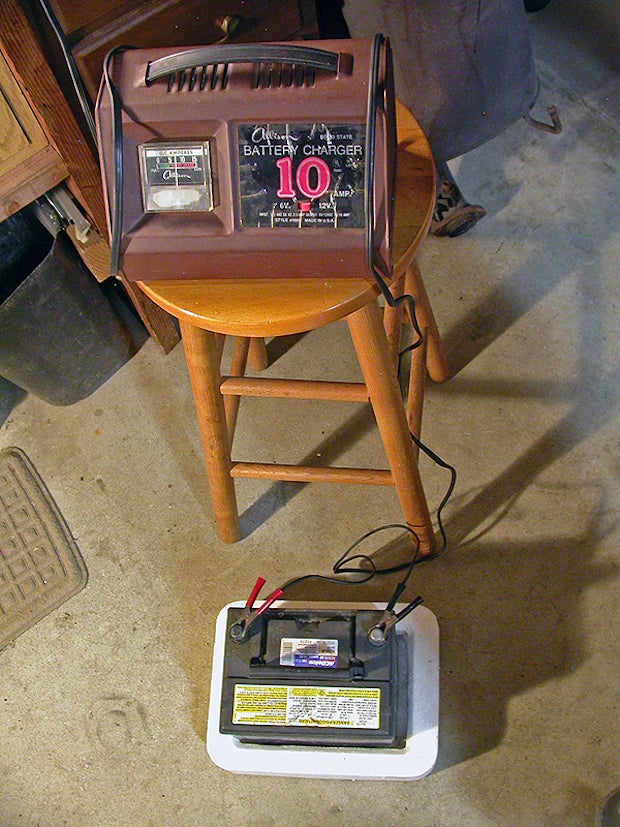
"Speaking of don't forget, if you're going to charge with a powerful dumb charger, set the timer on the stove to remind you that the battery in the garage is getting a workout. You wouldn't want to go to bed with this setup running. The bottom line is, don't forget about the battery - don't let it sit. Get a battery maintainer of the right sort - float-charger, trickle-charger, maintainer, whatever - to keep that battery topped off with a little charge, all the time. Then read the instructions, read the box - don't do something stupid that will burn down your barn."
"If you don't have access to electricity where you store your vehicle," said McIlvaine, "make sure your battery is fully charged and completely disconnected when the vehicle goes into storage. When you bring it out again, top the battery off with a battery charger (not your alternator) before putting your vehicle back into service."
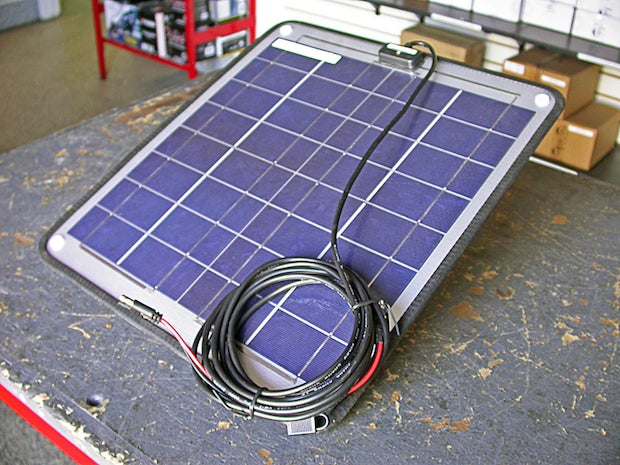
Can a solar panel do a good job trickle-charging?
Hernandez detailed the solar charging option, for those of us who don't park our trucks in caves, trailers, or on planets without a sun. "If you park your rig outside for long periods without using it, as with the Airstream trailers and RVs that I work on, a small solar panel with alligator clips that connect to your battery can do a pretty good job keeping 12-volt batteries topped off. You can also get small panels with a cigarette lighter plug that you can stick right in the lighter outlet, and then leave the panel on the dashboard. These little panels are only going to produce about 5-7 amps charge - perfect for a trickle."
He added some rules for charging with solar. "If you're going to use a solar panel - even a small one - to charge 12-volt batteries, it's got to have a voltage regulator. Solar panels need a regulator because their actual voltage is between 19 and 21 volts. If you feed 19-21 volts to your 12-volt battery, you're going to fry it. Fortunately, panels sold for charging or automotive applications usually have the regulator built-in. You've got to have the right regulator, too - it should be spec'd for 12 volts, because some semis run 24 volts. The regulator should step that 19-21 volts down to 12-13 volts."
"Don't forget: if you use a manual disconnect for your battery, your solar charger won't charge it unless it's connected directly to the battery! You wouldn't believe who makes that mistake..."
Is maintenance charging going to take as good of care of the battery as regular use?
"How often do you forget to do little things? Out of sight, out of mind," said Schwen. "Regular use for a four-wheeler or hobby truck is an oxymoron; you probably don't commute in your crawler. ... And when the weather's freezing and there's four feet of snow on the ground - when batteries need maintenance the most - you're worried whether your wife's Lexus will start, not if the battery in your quad is any good. Plug in a maintainer, and let it worry about the battery."
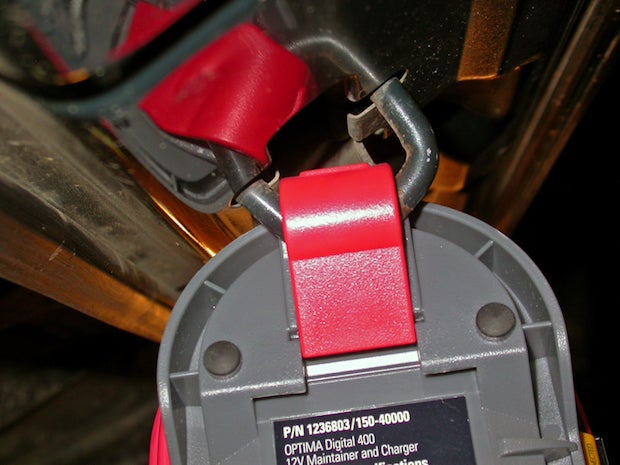
McIlvaine from OPTIMA expanded on the lifespan of an automotive battery, and the benefit of maintenance chargers. "Once a battery is produced, it is always either being charged or discharged. Even batteries sitting on a shelf will slowly discharge over time, so it's important to periodically check the voltage of your battery and charge it whenever the voltage drops below 12.4 volts. By staying on top of the voltage of your battery and subsequently charging it when necessary, you are extending the lifespan of the battery by minimizing the opportunity for sulfation to occur and ensuring it is in proper working order when you need it the most."
"When batteries are discharged below 12.4 volts and left to sit in that state (such as in storage), that's when sulfation really starts to impact battery performance and lifespan. All lead-acid batteries can experience sulfation, but chargers with a desulfation mode, such as an OPTIMA charger, can help condition your battery and keep it performing at its best. By following proper storage techniques, you can extend the life of your battery and maximize performance. OPTIMA chargers have automated features that provide constant voltage to the battery and charge it as necessary to prevent overcharging. Additionally, they ensure the voltage never drops below 12.4 volts, so your vehicle is going to be ready when you are."
Sources:
Jeff Schwen & Chris Hodges
Deep Cycle Battery
1985 Friendship Drive, Suite B
El Cajon, CA 92020
619.448.5323
619Battery.com
Jim McIlvaine, eCare Manager
OPTIMA
5757 N. Green Bay Avenue
Milwaukee, WI 53209
888.867.8462
optimabatteries.com
Abe Hernandez
RV Mobile Service 2U
San Diego, CA
760.802.3238

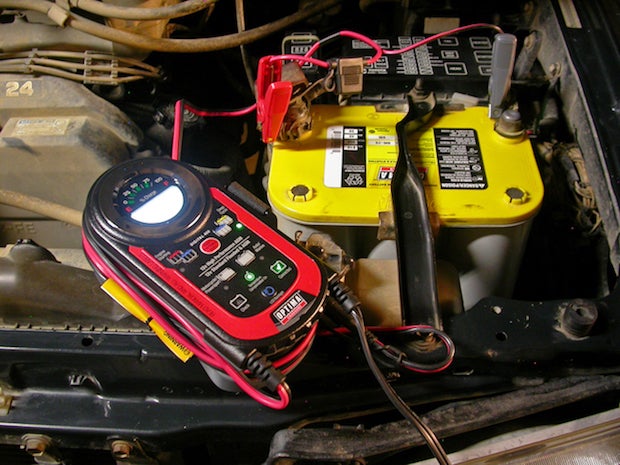

 Your Privacy Choices
Your Privacy Choices